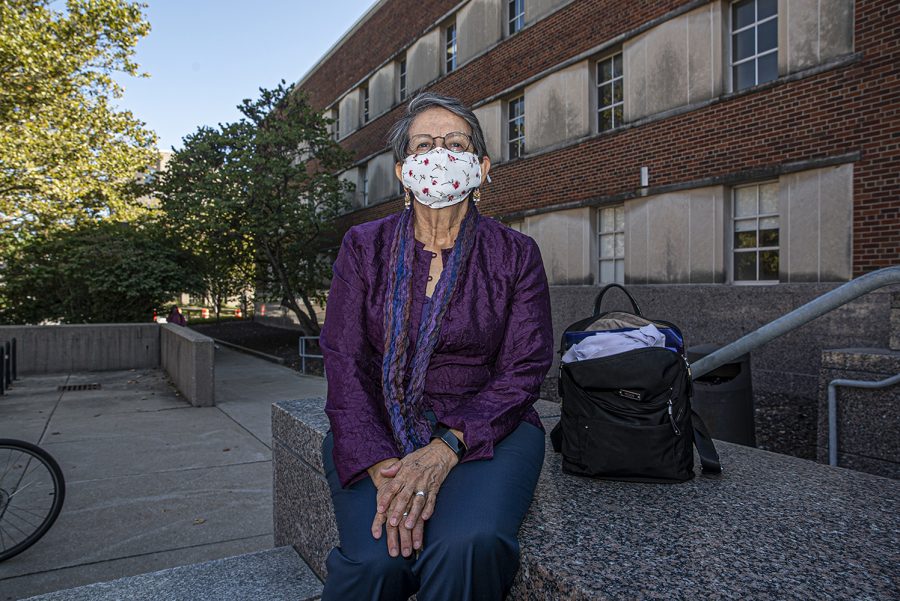COVID-19 imposes challenges on University of Iowa language courses
Language professors at the university and students say that learning a language during COVID-19 poses challenges.
University of Iowa Professor of Linguistics, Mercedes Nino-Murcia poses for a portrait in front of the University Library on Tuesday, October 6th, 2020.
October 6, 2020
At the University of Iowa, language professors believe that seeing a language being spoken is almost as important as hearing it. Whether the courses are being taught in hybrid or online formats, COVID-19 has created new challenges for those attempting to learn a language.
Interim director of the Division of World Languages, Literatures and Cultures Jill Beckman, who is also a professor of linguistics, is teaching all of her courses online this semester. Beckman said she made the decision to teach online because she was concerned about the impact of face coverings on students’ success and the ability to communicate.
“Let’s say that you cannot see a full facial expression, but also there’s information that we use just about the shape of the mouth and what you’re doing with your lips and so on,” Beckman said. “That is also helpful information if you’re listening to a spoken language. Having those visual cues can be really important, too.”
Beckman said many of her colleagues who also teach foreign language courses wanted to instruct face-to-face because of the social aspect of language learning and the desire to build a classroom community.
Professor of Spanish and Portuguese Mercedes Niño-Murcia said teaching at the UI is the most important thing to her. She spent a lot of time preparing each session for her students for the hybrid class format, she said.
Even with all of the thought that went into her courses, Niño-Murcia said she has a complicated schedule to make sure her students are comfortable. During the week, she teaches a class on Tuesday that is online. On Thursday, the class is a mixture of in-person and online instruction at the same time, she said.
RELATED: UI and Iowa City schools address massive growth in English-language learners
She said the hybrid format has been difficult as she tries to divide her attention between her students on screen and students in person.
“My ideal situation was to have one day of the week face-to-face, and one day of the week online,” Niño-Murcia said. “Then, COVID-19 got out of control in Iowa City and we found that meeting face-to-face would be risky, so we would do it online until the situation was under control.”
Students are also feeling the challenge of transitioning to online language courses. Zoë Strawser-Kling, a fifth year at the UI majoring in Japanese, said her foreign language class is also in a hybrid format.
She said that she prefers in-person classes because learning can be awkward in an online setting.
“It is definitely a transition,” she said. “There is less work to be done and a lot more listening and reading because the online platform is not that interactive. It definitely could be, but we have been watching more videos and reading more articles.”
In hybrid online and in-person classrooms, like Niño-Murcia’s, technology has also proved to be a problem.
“I get so frustrated when I cannot deliver the class the way that I thought it should be taught. Technology is wonderful, but it has issues too,” Niño-Murcia said.
Niño-Murcia said the transition to online instruction during spring semester was a lot smoother because her students had already developed chemistry to feel comfortable around each other. She said that this fall, it has been stressful to create that same environment.
“One day, they couldn’t see me. That problem was fixed. But the next day, my students could hear me on Zoom, but I couldn’t hear them,” Niño-Murcia said. “There have been some glitches and I hope to fix them and get to the point where my students and I are totally satisfied.”






